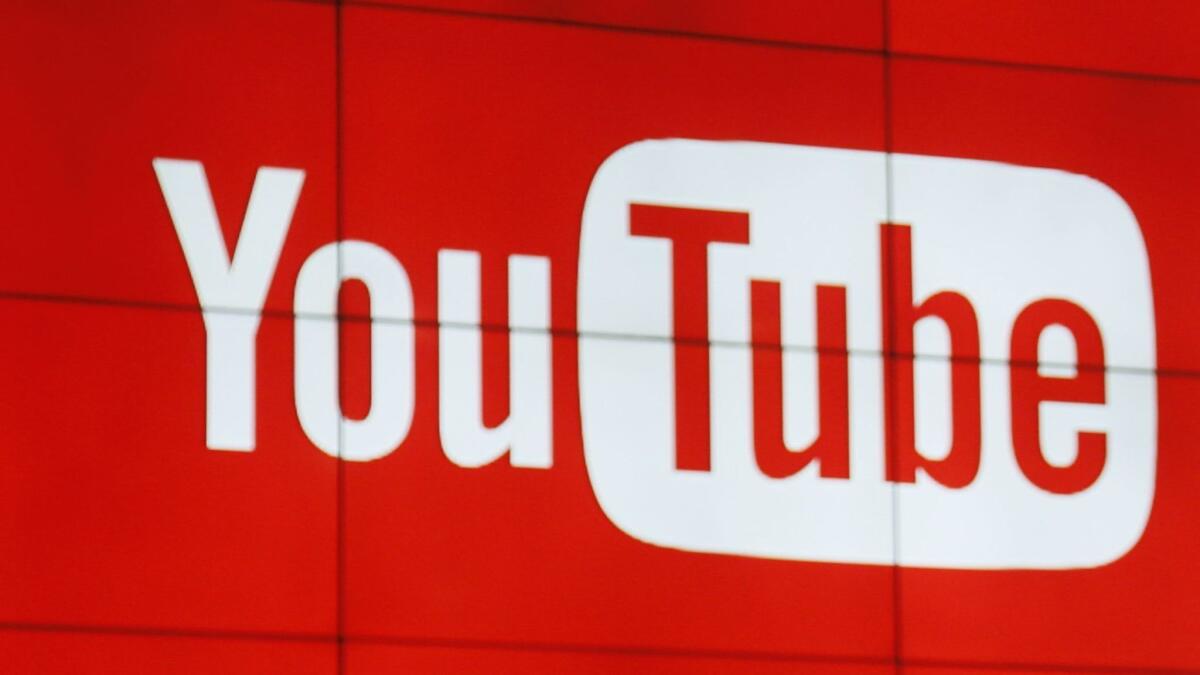YouTube changed its ad rules to appease advertisers. YouTubers say they’re the ones paying for it

Over the last 11 years, Chris Thompson has built a career on YouTube. His personal videos about relationships, sex and LGBTQ issues won him more than 385,000 subscribers.
But recent shifts by YouTube led Thompson to cast aside the platform that provided his primary source of income. This year, he’s trying to bring his audience with him to the Amazon-owned livestreaming service Twitch.
“I can talk about whatever I want on Twitch. I can speak my mind,” Thompson said.
Video producers like Thompson have long been considered the lifeblood of YouTube’s thriving community of so-called creators.
But that same grassroots community that helped YouTube spark a paradigm shift in media consumption has also become a growing source of risk for the Google-owned property.
Advertisers recoiled during a bruising year for YouTube’s image that started with charges of anti-Semitism against one of the platform’s biggest stars, PewDiePie. It progressed to outrage about disturbing videos disguised as children’s content, and culminated on New Year’s Eve when YouTube star Logan Paul posted a video of himself discovering a dead body in Japan’s “suicide forest.”
YouTube booted Paul from its premium advertisement program and rolled out a new advertising policy that requires creators to attain more subscribers and more hours of viewership to earn revenue.
Some video producers say they’re losing money due to the mistakes of stars like Paul. Others worry that in YouTube’s bid to appease advertisers, the company may grow even more sensitive to material that the creators consider benign.
Thompson said he has already been the victim of overzealous censorship by YouTube. He says income to his channel, SupDaily06, has largely dried up since some of his videos about LGBTQ issues were deemed inappropriate for advertising.
YouTube is now at a crossroads, analysts say, torn between harnessing the power of its dedicated army of creators and placating the risk-averse advertisers needed in ever-greater numbers to make the platform profitable.
And it comes as the stakes grow higher for YouTube, which is establishing itself as a media company to be reckoned with by investing in original content and offering a streaming alternative to network and cable TV.
In order to move forward, YouTube must do a better job policing its platform for harmful and offensive material by ensuring such content isn’t rewarded with ad revenue. But in doing so, it also risks stoking the perception it’s casting too wide a net and alienating the up-and-coming creators who made the platform so compelling. It’s an unenviable task, analysts say, one that could lead to more defections to other services if mishandled.
“YouTube has an identity crisis,” said Peter Csathy, founder of advisory firm Creatv Media. “It’s being pulled two separate ways by its past and where it wants to go.”
YouTube doesn’t want to lose its creators, but it wants to make sure the ones it promotes are properly vetted.
The latest rules are aimed at weeding out the kind of fringe material that has gotten the company in trouble.
Creators are now required to have 1,000 subscribers and log 4,000 hours of watch time in the past 12 months to be eligible for any ad payments — far stricter than rules established in April that barred advertising from accounts with fewer than 10,000 lifetime views. By mandating a healthy subscriber base, YouTube says it can prevent bad actors from making money.
In addition, YouTube said it would dedicate staff to screen every video in its more lucrative Google Preferred program, which consists of the platform’s top 5% of most viewed channels, before they receive ad revenue.
“We are deeply invested in ensuring that our community of creators, advertisers and users continue to thrive on YouTube,” the company said in a statement. “Each group’s success is dependent on the others, so it’s critical that our initiatives balance and align all of their interests in order for the ecosystem to grow and evolve.”
The new rules, which were introduced Jan. 16, were met with anger and tears from owners of burgeoning channels.
“I feel like YouTube doesn’t value small creators,” Christine Barger, a vlogger with just over 1,500 subscribers, said in an emotional video.
Even owners of larger channels felt the need to speak out about the change.
“I was under the impression that YouTube exists to empower content creators, but at the moment, YouTube seems to exist to empower advertisers,” said Rob Jefferson, whose channel, ComicsExplained, has 1.2 million subscribers.
Critics of the new plan also coalesced on Twitter to elicit support for small creators — many of whom expressed a desire to move to Twitch, which saw a 50% increase in daily users last year.
YouTube has acknowledged how tough it has been for many creators, but it also defends its recent rule change by arguing that the financial hardship is limited. It said 99% of the people who now fall beneath the threshold for advertising previously made less than $100 a year.
The company also noted that some creators applauded the tougher requirements, albeit ones with larger subscriber bases. Ejecting the bad actors, they say, improves the environment for good actors.
“This is actually great news. It means those who create channels to either steal or upload trending content for a quick buck no longer can as they wont have the [subscribers] or watch time behind them,” tweeted video gaming vlogger Suzy Lu, referring to the persistent problem of smaller channels uploading videos from widely viewed YouTubers to steal their traffic.
YouTube says it has no plans to further increase the requirements to qualify for advertising. But Brian Wieser, an analyst for Pivotal Research Group, said the company would have a much easier time policing the platform if only the biggest producers earned revenue.
“That would allow YouTube to manage dozens of relationships rather than thousands,” Wieser said.
Nielsen data from October suggest that’s not out of the realm of possibility. The research firm said 65 of the biggest media brands on YouTube account for half of all the views.
But even the biggest channels have to start small. Some worry the added barrier to success will diminish the ranks of talent bubbling up. Social media influencers now have ample alternatives to kickstart their careers. In addition to Twitch, there’s Snapchat, Instagram, Facebook and potentially Twitter, which is looking into a Snapchat-like video feature.
“You need a viable and creative ecosystem,” said Hank Green, founder of Vidcon, the annual digital video conference, and a pioneering YouTube creator. “I think anyone worth their salt at YouTube knows that.”
Follow me @dhpierson on Twitter







